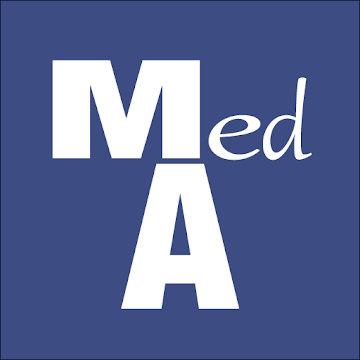Recently Broad River Rehab welcomed Joel VanEaton to the team. In this posting we’re going to ask Joel some burning questions we’ve been wondering about and get his perspective.
BRR: How will PDPM change the role of the MDS nurse?
JVE: Under PDPM the MDS nurse will only become more important for one primary reason: under PDPM, the MDS nurse will change from an assessment manager to a true resident condition assessor. PDPM will really require the MDS nurses to return to their nursing assessment roots. Under PDPM, the payment the facility receives will be determined not by service metrics, like therapy minutes, but will be the result of the resident characteristic picture painted by the MDS. Essentially, what that picture represents, in terms of what statistically it would cost to take care of that kind of patient, will be what determines the payment that the facility will receive. It will be up to a gate keeper, the MDS nurse, to ensure that that picture is complete and accurate and best represents what the facility should be paid for the care delivered to each Part A patient. One misstep could cost thousands of dollars. Instead of keeping track of assessment schedules, Under PDPM the MDS nurse must be able to keep track of the residents fluid characteristic profile.
BRR: We’re approaching a time where MDS nurses will need to simultaneously use PDPM, the 66 grouper for managed A and whatever Medicaid system their state uses. If you owned a SNF, how do you handle training?
JVE: Training under the current RUG groupers that will continue to apply should continue to be provided so that payment for managed A type patients and state Medicaid payments don’t lag. Moving throughout the next year, there should be strategic training modules provided related to the specifics of PDPM, not only from an informational but also an operational perspective. Training to understand PDPM as a whole and then breaking it down into its component parts will be essential. PDPM is such a new and complex concept with so many moving parts that providers will need to have a working knowledge of before October or 2019. Training must be informative and practical. Getting a handle on your facility data related to the kinds of patients you currently serve will go a long way to understanding how you will need to operate under PDPM. Training through PDPM would focus on real world scenarios that utilize facility specific examples.
BRR: You interact with a lot of MDS nurses, what are the biggest opportunities for improvement you see?
JVE: First, from my perspective, ICD-10 proficiency is number one. Currently ICD-10 is really a background item on the MDS at least in terms of payment. As long as the codes are to the required specificity on the UB-04, there is usually no problem. Most MDS nurses have had no formal training when it comes to ICD-10. Most are not certified coders and most nursing facilities do not employ certified coders. That may change over time as PDPM gets under way. However, for the time being, most providers will continue to rely on their MDS folks to get the ICD-10 job done. That said, under PDPM there needs to be a renewed focus on having people in your facility who are proficient with ICD-10.
Second, I think a focus on understanding and increasing aptitude with the CAA process is paramount. I say this for two reasons. One, from my experience, this is one of the least liked portions of the RAI. Many MDS coordinator find this sections difficult and time consuming. However, It is one of the most important sections to the RAI process as it brings together the entire picture of the resident for care planning purposes. Two, Under PDPM, becoming proficient at this process will set the good MDS nurses apart from the great MDS nurses. Understanding the resident condition and characteristics completely and monitoring this for changes throughout the Part A stay will be the key to successfully receiving appropriate payment under PDPM.
BRR: You have a passion for teaching, where did that come from?
JVE: My original college degree is in theater arts. Even though that has only recently surfaced as something I am doing in community theater on a regular basis, something about sharing stories and information with people has, in some way, always appealed to me. Early on in my nursing Career, a wonderful lady who would go on to be a mentor to me in many ways, Dr. Mary Marshall, came to the facility where I was working as a MDS coordinator and taught us Medicare Part A. This opened up a whole new world to us and the way she explained it was invigorating to our understanding and operations. Dr. Marshall and I formed a special friendship over the years since that early meeting and she helped me open up and develop my teaching capacities. It was through her encouragement and mentoring that she connected me to the Georgia Healthcare Association in 2009. Through the GHCA, I was able teach MDS 3.0 at multiple sites throughout GA and grow in my teaching abilities and confidence level. Since then I have had many teaching opportunities and have grown in my passion for it. I love to be able to present difficult material, like Medicare Regulation, and watch the light bulb go on and the connections be made. I love seeing people become passionate for what they do by making it a little easier to understand what they do.
BRR: We didn’t get outcomes with PDPM. Is section GG the future of outcome reporting? How do we reconcile outcome reporting, value based purchasing and Jimmo v Sebelius? When will we get outcome-driven reimbursement?
JVE: These are good questions and I wish I had a crystal ball. I do believe that section GG is the future of outcomes reporting primarily because it is a site neutral set of questions. The IMPACT Act requires both PAC site neutral quality reporting and payment. Notice that the QRP quality measures that originate with section GG that will be initiated this fall related to outcomes all begin with, “An Application of IRF Functional Outcome Measure”. In other words this is a version of a QM was already being reported in the IRF setting and is now being applied to the SNF setting. So the outcomes measures as well as the other QRP measures are or will be applicable to all PAC settings as mandated by the IMPACT Act.
I don’t believe that Jimmo v Sebelius will pose a challenge to reconciling outcomes reporting and or value based payment. Notice again the new section GG based QRP measures that we will begin reporting this fall; “Estimates the risk-adjusted mean change in self-care score between admission and discharge for SNF Part A residents discharged from a SNF”. And, “Estimates the percentage of SNF residents who meet or exceed an expected discharge mobility score”. Unless you have a inordinately high number of medically necessary maintenance case on Part A, I don’t believe either of these measurements preclude maintenance programs even if payment, via incentives/penalties or direct adjustments, ever occurs.
I do believe that we will begin to see benchmark related payment adjustments due to outcomes in the very near future. We are already seeing them this fall related to re-hospitalizations via the VBP incentive. In Tennessee, the Medicaid program will begin to attach quality related payment adjustments based on outcomes beginning as early as July 2020. While no specific program has been proposed, it does not seem to me that it will be long until CMS attaches some type of payment adjustment to the annual Medicare rates based on outcome benchmarks rather than simple reporting thresholds.
BRR: Section GG is a subjective measure. How can we possibly expect to be able to compare performance between different facilities?
JVE: While it is true that section GG is subjective it is based on objective guidelines that everyone should be following out of the RAI Manual and data set. The best we can hope for is that a majority of providers will accurately code resident function based objectively on those guidelines. All of the other QM data is the same: self-reported. Even the VBP incentive that will be applied this fall is subjective in some way as it is based on what the hospital reports.
BRR: Do you think state Medicaid plans will eventually migrate towards a PDPM model?
JVE: In the FY 2019 final rule, CMS seems to indicate that this is their ultimate desire. However, they also indicate that they understand the challenges that this would pose. Even though PDPM is designed a s a short term payment system, in time, I am sure that some version of PDPM will find its way to the state level. With that in mind, I do not foresee any impending change to PDPM at the state level any time soon.
BRR: What would you say to a nurse that wants to learn the MDS?
JVE: I believe that this is the best time since the advent of the MDS Nurse role to pursue a career as an MDS professional. Never in the history of MDS and PPS has there been a time where the MDS nurse can truly be a nurse and do the things they were trained to do. The PDPM will require that the MDS nurse be accomplished and capable resident condition assessors. It is a challenging yet rewarding time to be a MDS professional and it is my opinion that accomplished and capable MDS professionals will be one of the most sought after individuals in LTC.
BRR: With all the focus on PDPM, how do we make sure we don’t minimize the importance of long-term residents?
JVE: We are, after all, LTC communities. The bulk of who most facilities care for are long term. One way to ensure that we do not lose focus is to not assume that because there will be fewer PPS assessments that we need fewer MDS nurses. See my answer above for why that is true. Assessing LTC residents is just as important as it is for the short term resident. Facilities can’t lose that focus. Systems that are in place for doing this won’t go away. Learning PDPM will be a curve that we will navigate and become successful at. Caring for LTC residents, as well as capturing that care for appropriate reimbursement, is something we are already good at and will continue to be despite PDPM.


